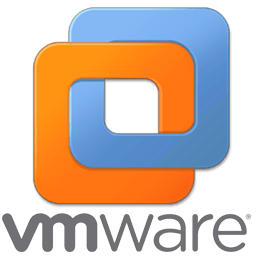How To Install VMware Workstation on Rocky Linux 9

In this tutorial, we will show you how to install VMware Workstation on Rocky Linux 9. For those of you who didn’t know, VMware is a virtualization tool developed by VMware, Inc. This tool developed in 1998, as a subsidiary of Dell Technologies, bases its virtualization technology on the ESX/ESXi in x86 architecture. In computing, Virtualization is the technology that allows you to create virtual machines over an existing operating system, hardware, server, desktop, storage device, or network resources.
This article assumes you have at least basic knowledge of Linux, know how to use the shell, and most importantly, you host your site on your own VPS. The installation is quite simple and assumes you are running in the root account, if not you may need to add ‘sudo‘ to the commands to get root privileges. I will show you the step-by-step installation of the VMware Workstation on Rocky Linux. 9.
Prerequisites
- A server running one of the following operating systems: Rocky Linux 9.
- It’s recommended that you use a fresh OS install to prevent any potential issues.
- SSH access to the server (or just open Terminal if you’re on a desktop).
- A
non-root sudo useror access to theroot user. We recommend acting as anon-root sudo user, however, as you can harm your system if you’re not careful when acting as the root.
Install VMware Workstation on Rocky Linux 9
Step 1. The first step is to update your system to the latest version of the package list. To do so, run the following commands:
sudo dnf check-update sudo dnf install dnf-utils kernel-headers kernel-devel gcc
Step 2. Installing VMware Workstation on Rocky Linux 9.
By default, VMware Workstation is available on Rocky Linux 9 base repository. Now run the following command below to download the installer package bundle for Linux from the downloads page:
wget https://download3.vmware.com/software/WKST-PLAYER-1624/VMware-Player-Full-16.2.4-20089737.x86_64.bundle
Now we give executable permissions to the file:
chmod +x VMware-Player-Full-16.2.4-20089737.x86_64.bundle
Next, install VMware Workstation / Player on Rocky Linux 9 using the following command below:
sudo ./VMware-Player-Full-16.2.4-20089737.x86_64.bundle
Output:
System service scripts directory (commonly /etc/init.d).: /etc/init.d
Installing VMware VMX 16.2.4
Configuring...No rc*.d style init script directories were given to the installer.####################################### ] 61%
You must manually add the necessary links to ensure that the vmware
service at /etc/init.d/vmware is automatically started and stopped on
Installing VMware Player 16.2.4
Configuring...
[######################################################################] 100%
Installation was successful.
Once done, install the required VMware modules:
sudo vmware-modconfig --console --install-all
Step 3. Accessing VMware Workstation on Rocky Linux 9.
Once the installation is completed, open the VMware on your system by using the application search bar. Click on ‘Activities’ and then type ‘VMware’ in the application search box.
Before you start using VMware to create virtual machines, you first need to go through a configuration setup:
- Select I accept the terms in the license agreement and click Next on VMware Workstation – End User License Agreement.
- Select I accept the terms in the license agreement and click Next on the VMware OVF Tool component for Linux – End User License Agreement.
- Choose whether VMware can check for product updates on startup and click Next.
- Decide whether to join the VMware Customer Experience Improvement Program (CEIP) or not and click Next.
- Enter the license key in the box below I have a license key for VMware Workstation or try VMware Workstation 16 for 30 days. Click Finish to proceed.
- You may need to enter the password of your account to complete the setup.
Congratulations! You have successfully installed VMware. Thanks for using this tutorial for installing VMware Workstation on your Rocky Linux 9 system. For additional help or useful information, we recommend you check the official VMware website.